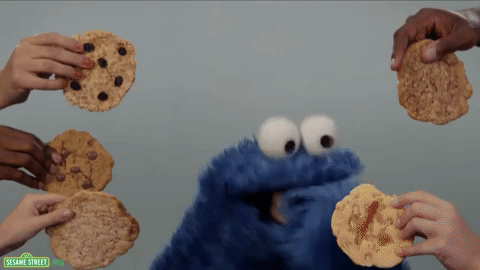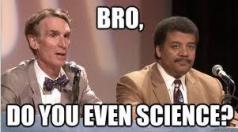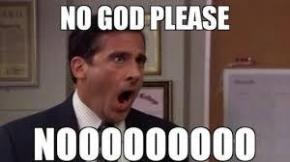Month: April 2019
The Future Path: Minnetonka Research
By Tommy A., Senior
Research 2 Student



I know Minnetonka Research seems like a daunting class to take but trust me, it is more than just collecting data to prove a point. This is my second year in research and it has done way more than just teach me the science behind my topic. It has carved a path for my future studies at college. One of my mentors for my research project is the Kinesiology department chair at the University of Wisconsin-Eau Claire (UWEC). Kinesiology is very similar to sport science and fits in with the research I am doing this year. When the stress of choosing a college started to loom over my head, I had no idea what I wanted to do and where I wanted to go. Research helped me to narrow down my options for college because of the connections I made with my mentor. My interactions with my mentor lead me to investigate the Kinesiology program at UWEC and I fell in love with it during my first visit. This lead me to apply, and I am happy to say that I will be attending UWEC next year studying Kinesiology in the rehabilitation science program. I would never have thought that Minnetonka Research would help decide my future career path.
Not only has research helped me to find my dream college but also has introduced me to some awesome faculty that I will be working with next year. I am truly impressed with my mentor, Dr. Janot, at Eau Claire because he has stepped out of his way to help in my research. A very heartwarming example is that when I got my acceptance letter in the mail, Dr. Janot had put a personal note on it for me. This makes me feel way more welcomed to the school. I have also been able to sit in on a few classes, get a personal tour of the lab and meet other faculty members at Eau Claire. This makes me very excited to go and I can’t wait until I finish my senior year and am able to start college.
I am so happy about the opportunities that research has given me in figuring out my future life choices. Being already accepted into college and knowing what I want to study allows me to focus on my senior year of having as much fun as possible while still finishing strong academically. If you are ever considering Minnetonka Research as a class, I would highly recommend it because it can lead to some big things like it did for me.
Now is the time to research.
By Cole F., Senior
Research 1 Student

Coming into Minnetonka Research in its third year has been amazing. The connections they have now, and continue to make have aided a huge amount.
Research also now knows better how to help all of the students and to emphasize the summer work. For me this was crucial to digesting the dozens of pages of information I had to read to narrow down my topic, and then to truly understand every word of a dozen pages from three papers in order to write my proposal. The accumulated resources and guides were a lifesaver.
I live in an age where technology has made information widely available and easily absorbed on whole new levels. The fact that I can find and read a paper written by co-authors from the University of Minnesota Twin Cities and two Chinese universities is amazing. I was originally doing research on the polymerization of biobased polymers, and most of the work was out of Asia and that felt really far away. So I started looking for similar work done closer to me, and I was amazed that I found a series of papers on what I was looking for that was co-authored by several University of Minnesota professors.
Once I found those three papers I was given the daunting task of understanding them. And it was surprisingly easy. Thanks to my vast resources at Minnetonka, in both web databases and teachers, one of the hardest parts was just digesting the sheer volume of information. Asking questions and looking at the reference papers in bibliographies got me most of the way there. After that, I just had to compile my knowledge.
Less than a month after my first email to the author at the U of M, he was able to give bacteria and plasmids to my mentor, another U of M professor, and I was able to pick them up. Now I have successfully grown the bacteria, and successfully inserted a plasmid into the bacteria.
Shipping times and costs continue to amaze me, and are a really part of what makes my research possible. Having the samples is all fine and dandy, but I need new materials and media to keep them alive, and experiment. I was able to get more than enough Terrific Broth, with shipping equal to the cost of a small coffee, delivered in a week. Impressive time frames and costs like that are the only reason I can expect to get meaningful data out of a 10 month timeline.
At the same time technology means it only took a couple of weeks for me to receive a chemical that requires -20 c storage. And thanks to growing competition I got it shipped to me at less than half the cost of the largest chemical provider Sigma Aldrich.
The top picture shows my progress so far. It is a control run of transforming bacteria. The left two plates don’t have any antibiotic on them so the bacteria could grow all over, and the right two plates have antibiotic on them. The far right plate has the transformed, antibiotic resistant, bacteria and the right middle plate had normal bacteria that didn’t grow because of antibiotics.
All of this came together to make one control test in my research project. With all of this progress I can only imagine what the next couple months will bring.
Chocolate Chip or M & M Cookies…
by Trisha T., Junior
Research 1 Student

Grooooooowl… Is that my stomach? GRROOOOOOOWLLL!! Yup. It definitely is. How about going to the store and buying a few munchies?
I drive to my local grocery store and park my car outside in the freezing weather. I immediately run like Usain Bolt into the store. A multitude of different snacks, from sweet things like brownies and candies, to other healthier options, like cheese sticks and granola bars, come at me like a tornado. Everything looked so good! I wanted to buy everything, but… I only had $3.50 on me. Because of this limitation, I decided to buy some cookies. Yum! Chocolate chip cookies. Oh wait! M & M cookies. Which one do I pick?
Just like the many snacks you can find in a store, your research project has many topics you can choose from. If you are the type of person to get stuck over the infinite amount of choices and are unable to decide between which topic you want to investigate, don’t worry. The other researchers and I have been at that exact spot. For the longest time ever, I was stuck in this phase of my research journey. I first thought that Research was a class in which you just sit and read studies on the internet and write a report about it at the end of the year. This misconception lead me to come up with project ideas that were too advanced for me this year, or too complex to investigate within the time limit of a school year. Therefore, I hope that after you read the rest of this post, you’ll have a better sense of what kind of projects you’ll be able to do and enjoy along the way.
Here are a few suggestions and questions that you can think about to avoid this sticky situation.
1. Where do I start?
First, think about the topics that interest you and then write them down. Do you like engineering? Technology? Biology? Chemistry? Once you figure out your top three topics, do a bit of hunting for previous studies in your field of interest on the internet. One resource that was really helpful for me was the ISEF Projects Database: https://abstracts.societyforscience.org/ . This database gave me a whole array of studies and also guided me to narrow down my topic.
2. Look for topics you can experiment on and make sure it is feasible.
What I mean by this is that you should have a project that you can create a realistic hypothesis and an experimental process for (like a lab you do in class). For example, building a device, raising animals and exposing them to a chemical, growing plants, organizing data and analyzing it, imitating a habitat, and much more.
3. Know the cost of the project and your budget
For some projects, the price tag is your enemy. I was lucky enough to not have faced this problem but I know researchers who had to change their project countless times because the cost was too high. If the price is too high, this doesn’t have to stop you. Find a smaller component of your project so you can test it.
4. Do you have enough knowledge on this subject? If not, are you willing to learn and encounter many obstacles?
I’ve noticed many projects, including mine, contain or require information that we’ve never learned about in science class. But the driving factor in our projects is the desire to learn more. It doesn’t matter how many problems you encounter because you know that the feeling of satisfaction at the end will be much greater.
5. What happens when there’s already a project that’s similar to mine?
Easy! Just change a couple of variables in your project such as the test animal, the dosage amount, the type of material used for building, the length of the experiment, etc. so that it’s unique in the field you are studying.
I hope that these suggestions help you on your journey in Research!
Fitting a Square Peg in a Round Hole
by Charlie H., Senior
Research 2 Student

The sight of hundreds of research projects lined up in a stadium was more than a little intimidating to me when my partner and I competed in the Twin Cities Regional Science Fair with the app that we have been working on for the past several months. The app uses augmented reality to overlay dots on the neck of a bass guitar to show the user where they could place their fingers for each of four randomly generated chords. This fair gave us a great opportunity to improve our communication skills, as well as get some feedback on our project so far.
Though I participated in the Minnetonka Research Symposium last year, this science fair was very different. It was much larger and far more formal than anything I had done before. The judges slowly came around, each one asking us to explain our project and talking with us for a while about what we had done. Judging was particularly interesting because each judge had a very different field of expertise; some worked as biologists, some as doctors, and one was a senior member of the computer science department at the University of Minnesota.
We placed well enough at the regional fair that we will be competing at the state level at the end of the month, which has presented a new set of challenges for us. At the regional fair, we were only able to demonstrate our app while it was stationary, and even then the augmented reality tracking was nowhere near perfect. Because of this, we have spent the past few weeks looking for ways to improve this.
Our idea is to increase the contrast of the video feed that the app is working with. The software we are using relies on its ability to differentiate parts of the video, and increasing the contrast would make each part of the image much more distinct and therefore easier to track. Our difficulty with this, though, has been a notable lack of resources for accomplishing this increase in contrast. Because of this, we have had to come up with a way to combine two very different programs, which has been kind of like trying to fit a square peg in a round hole. This has been a frustrating process since neither of us have much experience with any of the software we are using.
As of right now, we are still working on combining these pieces of software. It has been a frustrating and difficult process, but also extremely rewarding. All of this work will ideally make the tracking accurate enough to implement in a marketable app, and allow us to demonstrate the finished product at the state science fair at the end of the month.
Measurement Madness
By Thijs L., Senior
Research 1 Student
As a bright eyed, novice research student, there are so many new things to learn. Many questions can be explained fairly easy: how to culture bacteria, how to properly clean a lab bench, how to work an autoclave, what is an autoclave…

But, fairly soon, you are required to make integral decisions about your project… on your own. For me, the first “oh wow they are letting an inexperienced high school student make important decisions” moment was determining how/what to measure. While this may seem like a small aspect in the larger scheme of things, it can actually determine the entire outcome of a project. I wasn’t hoping to find myself 7 months down the line with absolutely no data. My goal was to break down octane, a primary component of gasoline, using bacteria. But, I couldn’t find a guide which magically told me how to run my experiment anywhere on the internet (weird, right?). To quote Michael Scott “I knew exactly what to do. But in a much more real sense, I had no idea what to do.” So, I turned to my teacher, Mr. Burns.

“How could I measure the degradation of octane?” I asked hoping it wouldn’t seem trivial. Surprisingly, the response I got was not “Bro, do you even science?” Instead, a rush of possible ideas came in from the science department. Mr. Kokesh suggested the use of a bomb calorimeter. Based on the temperature of the resulting combustion, it would allow the octane to be quantified with one issue: all the bacteria would be burned as well. This could make it difficult to distinguish how much octane was consumed. And, you know, all my bacteria would die. Another teacher suggested the use of V. fischeri (my selected bacteria) bioluminescent capabilities. However, after trying to get the bacteria to light up, I received little indication that this would work well.

Suddenly one day, Mr. Burns burst into the room with an idea. He began scribbling elaborate graphs on the wall with the words absorbance and the lambda symbol. Slowly but surely, I began to decipher what he was describing. A device called a UV-Vis Spectrophotometer could be the answer to all my problems. The data collected would give me 3 possible ways to understand how much octane was being broken down by the bacteria.
- The data from the light wavelength of 490 nm could be observed and in turn, this would measure the metabolism of the bacteria.
- It was possible octane could be directly quantified at 450 nm. Usually, there would be a spike in the amount of light absorbed by a given particle at a certain wavelength, and I expected to see this at 450 nm.
- Lastly, I would turn to common practice, 600 nm. It would measure how much octane was broken down based on the amount of bacteria that grew.
A few weeks later, as I began to use the UV-Vis, I started getting nervous. Very nervous. The data collected didn’t immediately appear as I had hoped. After about 4 days the solutions hadn’t changed at all. On the outside, I may have looked calm, but on the inside not so much. My inner feelings could best be described by the following meme:

However, on the 6th day, a solution began to appear cloudy, and hope suddenly returned to me. I put it in the UV-Vis, and I received an unusual reading. There were spikes, but they were not exactly as I had predicted. There were no drastic crevices at a wavelength of 490 nm or high peaks at 450 nm as the first two ideas had predicted. But, by all means, the data began to produce similar patterns in other solutions in the successive days.
After the 10 days of data collections, I began to piece things together using the 3 proposed calculation ideas.
To my dismay, the first two ideas did not work. However, third time’s the charm. My third idea proved to be effective. By using the data at a wavelength of 600 nm, I was able to quantify the bacterial growth as an indirect measurement for the breakdown of octane. . . . so in conclusion the entirety of my project was not ruined . . . . . at least not from measurement error.
What’s to learn from this measurement madness? Keep an open mind. It’s never a bad idea to ask for the opinion or help from others, as collaboration can produce many unique solutions. This goes for more than just research, or in other words, it goes beyond the glass.